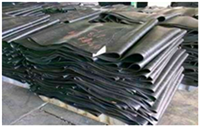Guangdong Yuanlin New Materials Co., Ltd
Contact person: Mr. Gu
Mobile phone:13826960299
Contact person: Li Yongfeng
Mobile phone:18128036097
Telephone:0769-88319157
Fax:0769-88319159
E-mail:gogothomas421@gmail.com
Address:No. 10, Shangye Road, Changping Village, Daojiao Town, Dongguan City
Technological characteristics of kaolin
Brightness and whiteness are one of the main parameters for the technological performance of kaolin, and high purity kaolin is white. The whiteness of kaolin is divided into natural whiteness and calcined whiteness. For ceramic raw materials, the whiteness after calcination is more important, and the higher the calcined whiteness, the better the quality. The ceramic process stipulates that drying at 105 ℃ is the classification standard for natural whiteness, and calcining at 1300 ℃ is the classification standard for calcined whiteness. The whiteness can be measured using a whiteness meter. A whiteness meter is a device that measures the reflectivity of light at wavelengths of 3800-7000 ? (i.e., 1 angstrom=0.1 nanometer). In a whiteness meter, the reflectance of the test sample is compared with that of the standard sample (such as BaSO4, MgO, etc.), resulting in a whiteness value (such as a whiteness of 90, which is equivalent to 90% of the reflectance of the standard sample).
Brightness is a process property similar to whiteness, equivalent to the whiteness under 4570 ? (angstrom) wavelength light irradiation.
The color of kaolin is mainly related to the metal oxides or organic matter it contains. Generally, it contains Fe2O3 and appears rose red or brown yellow; Containing Fe2+, it appears light blue and light green; Containing MnO2 in a light brown color; If it contains organic matter, it appears in light yellow, gray, blue, black, and other colors. The presence of these impurities reduces the natural whiteness of kaolin, and iron and titanium minerals can also affect the calcined whiteness, causing color spots or melting scars on porcelain.
Particle size distribution, particle size distribution refers to the proportion (expressed in percentage) of particles in natural kaolin within the range of given continuous different particle sizes (expressed in the mesh of mm or micron sieve). The particle size distribution characteristics of kaolin are of great significance to ore washability and process application. Its particle size has a great impact on its plasticity, slurry viscosity, ion exchange capacity, molding performance, drying performance and firing performance. Kaolin ore requires technical processing, and whether it is easy to process to the required fineness has become one of the standards for evaluating ore quality. Each industrial department has specific particle size and fineness requirements for different uses of kaolin. If the United States requires kaolin used as a coating to be less than 2 μ The content of m accounts for 90-95%, and the papermaking filler is less than 2 μ The proportion of m is 78-80%.
